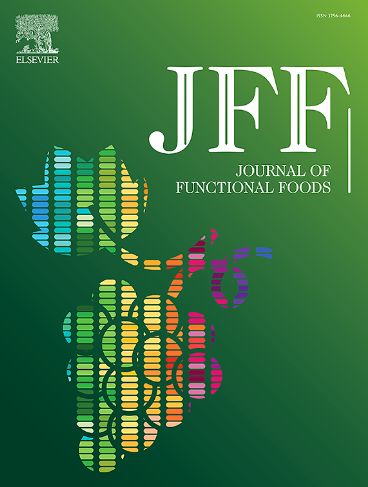Standardized hot water extract from the aerial parts of Cirsium setidens (Dunn) Nakai alleviates UVB-induced skin photoaging damage through the inhibition of MMP-1/3 and MAPK/AP-1 pathways in vitro and in vivo
IF 3.8
2区 农林科学
Q2 FOOD SCIENCE & TECHNOLOGY
引用次数: 0
Abstract
Repetitive exposure to ultraviolet (UV) radiation causes skin damage, leading to inflammation, wrinkles, and aging. Many natural products are being highlighted as anti-aging agents due to their accessibility and minor side effects. Here, we explored the photoprotective effects of a standardized hot water extract from the aerial parts of Cirsium setidens (Dunn) Nakai (CS). In Hs68 cells, CS treatment reduced UVB-induced cytotoxicity and inflammation. CS decreased matrix metalloproteinase (MMP-1, −3) expression by inactivating the MAPK/activator protein-1 (AP-1) signaling pathways and recovered pro-collagen type I levels by activating the Smad pathway. CS reduced ROS production and activated heme oxygenase-1 (HO-1)/nuclear factor erythroid-2-related factor 2 (Nrf2) signaling pathway. In HR-1 mice, oral administration of CS reduced wrinkle formation and epidermal/dorsal thickness, while also restoring hydration. CS inhibited collagen degradation by downregulating MMP-1, −3, and − 9 expression via inactivation of the MAPK/AP-1 and stimulation of the transforming growth factor beta (TGF-β)/Smad signaling pathways.

标准热水提取物通过抑制MMP-1/3和MAPK/AP-1通路,在体外和体内减轻uvb诱导的皮肤光老化损伤
反复暴露在紫外线辐射下会导致皮肤损伤,导致炎症、皱纹和衰老。许多天然产品被强调为抗衰老剂,因为它们的可及性和轻微的副作用。在这里,我们探索了从茜草(Dunn) Nakai (CS)的空中部分标准化热水提取物的光保护作用。在Hs68细胞中,CS处理降低了uvb诱导的细胞毒性和炎症。CS通过灭活MAPK/activator protein-1 (AP-1)信号通路降低基质金属蛋白酶(MMP-1,−3)的表达,通过激活Smad通路恢复I型前胶原蛋白水平。CS减少ROS生成,激活血红素加氧酶-1 (HO-1)/核因子-红细胞-2相关因子2 (Nrf2)信号通路。在HR-1小鼠中,口服CS可减少皱纹形成和表皮/背部厚度,同时恢复水合作用。CS通过抑制MAPK/AP-1的失活和刺激转化生长因子β (TGF-β)/Smad信号通路,下调MMP-1、−3和−9的表达,从而抑制胶原降解。
本文章由计算机程序翻译,如有差异,请以英文原文为准。
求助全文
约1分钟内获得全文
求助全文
来源期刊

Journal of Functional Foods
FOOD SCIENCE & TECHNOLOGY-
CiteScore
9.60
自引率
1.80%
发文量
428
审稿时长
76 days
期刊介绍:
Journal of Functional Foods continues with the same aims and scope, editorial team, submission system and rigorous peer review. We give authors the possibility to publish their top-quality papers in a well-established leading journal in the food and nutrition fields. The Journal will keep its rigorous criteria to screen high impact research addressing relevant scientific topics and performed by sound methodologies.
The Journal of Functional Foods aims to bring together the results of fundamental and applied research into healthy foods and biologically active food ingredients.
The Journal is centered in the specific area at the boundaries among food technology, nutrition and health welcoming papers having a good interdisciplinary approach. The Journal will cover the fields of plant bioactives; dietary fibre, probiotics; functional lipids; bioactive peptides; vitamins, minerals and botanicals and other dietary supplements. Nutritional and technological aspects related to the development of functional foods and beverages are of core interest to the journal. Experimental works dealing with food digestion, bioavailability of food bioactives and on the mechanisms by which foods and their components are able to modulate physiological parameters connected with disease prevention are of particular interest as well as those dealing with personalized nutrition and nutritional needs in pathological subjects.
 求助内容:
求助内容: 应助结果提醒方式:
应助结果提醒方式:


